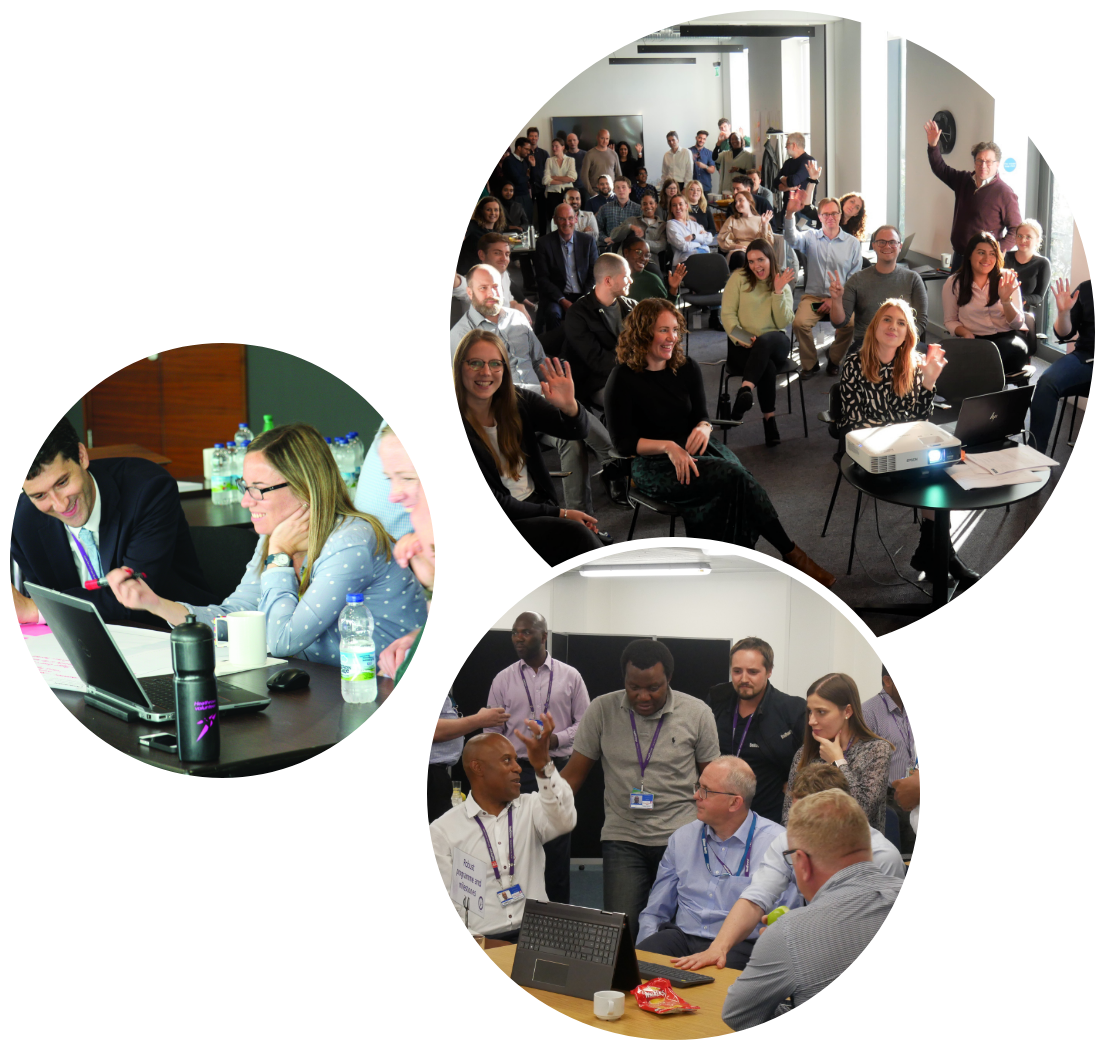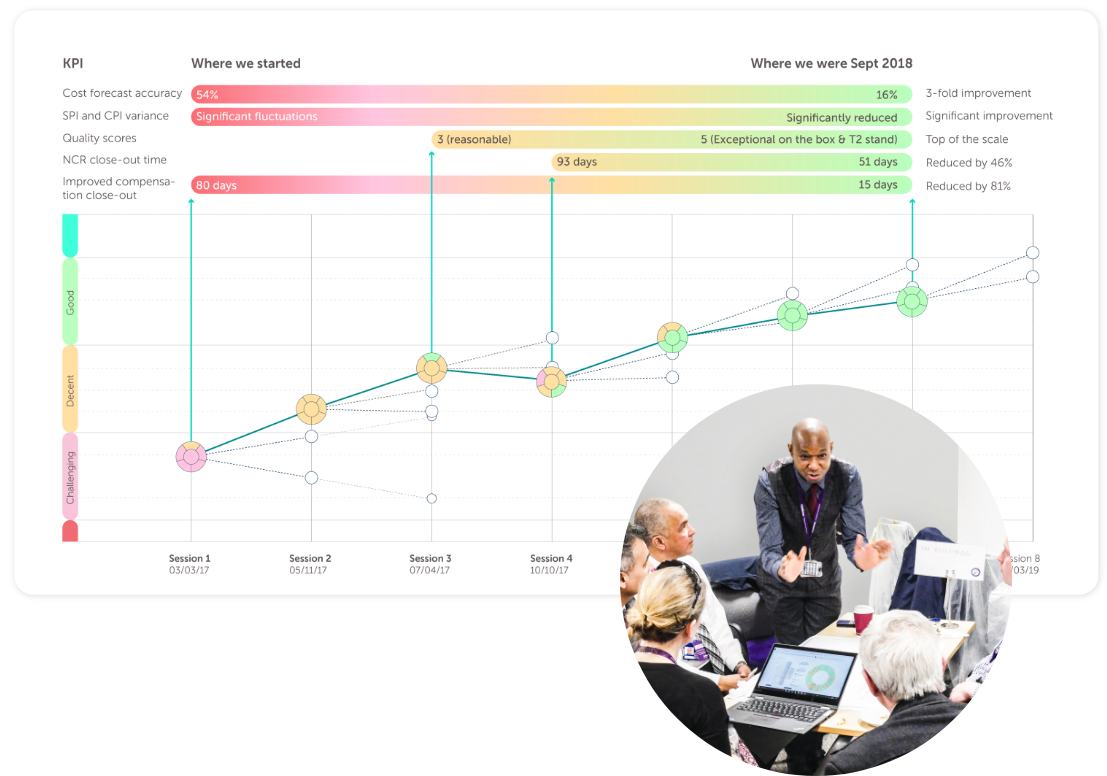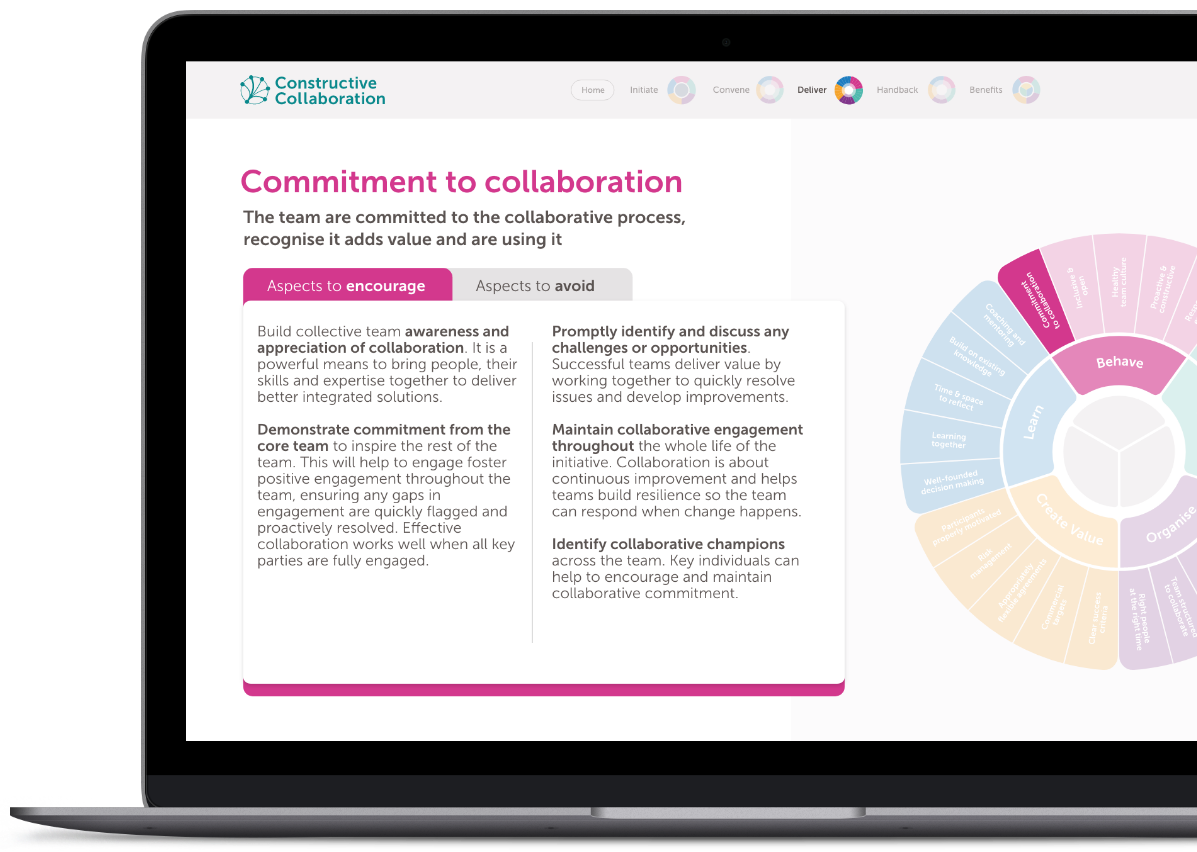Onboarding resources for teams
Constructive Collaboration (CC) provides a unique evidence-based methodology that empowers teams working in complex environments to collaborate and deliver better outcomes for their clients and themselves.
This microsite gives access to CC onboarding material for individuals and project teams.
To access the material, enter your details, or scroll for an overview of the material prior to login (further information can be found on the CC website).
Login


Benefits of this process
The CC evidential process allows teams to self-assess their collaborative status and agree priorities so they can progressively improve.
As their collaborative status rises, performance improves (including the team’s wellbeing). When this happens, exceptional outcomes can be delivered.
LoginOnboarding material for teams
This material fuses learning from over 60 project years of support to delivery teams with insight from key individuals and experts.
The material is designed to be used alongside the CC process. It helps teams understand what aspects should be encouraged and what should be avoided at each stage of the collaborative lifecycle. See more
Login
End to end collaboration
This site provides material that is primarily used to onboard teams during the lifecycle of an initiative (the Constructive Collaboration, CC, process divides this into five stages).
To view each stage (initiate, assemble, deliver, handover, benefits/outcomes), hover over the wheel (click on phone/tablet) and then click for more detail.
Initiate
Key leaders will be articulating their high level vision (the ‘why?’) and the mission (‘what and how?’) of the initiative.
Whilst the desired outcomes may be ‘emerging’, it is prudent to wait until most of the core team is in place before agreeing outcomes. This will help to ensure outcomes have whole team buy-in.
At this stage, the CC methodology helps ensure that key collaborative building blocks are in place and that key actors are aligned before moving to assemble the broader core team.
Assemble
At this stage, the broader core team would be assembling and be developing early options.
This stage needs a set of loose principles that will help the team to shape the broad basis of an effective collaborative environment. During the assemble stage, the team will articulate and agree the broad outcomes sought.
Deliver
At this stage, a single option will have been selected. The team will be focused on preparing for delivery, and the extended delivery team will be engaging.
The ‘Delivery wheel’ uses a set of more practical or tangible characteristics that focus on creating, improving and sustaining an optimal collaborative delivery environment.
Handover
At this stage, following delivery, the team will be preparing to handover assets.
At this point, the process reverts to a simpler wheel with a language focused on what is needed to sustain optimal collaboration throughout handover.
Benefits/Outcomes
At this stage, the team will evaluate the benefits of the initiative.
The process uses seven key prompts to capture the essential benefits and outcomes from the initiative.
Initiate
The client and its advisors should have already defined the need. Key leaders will be articulating their high level vision (the ‘why?’) and the mission (‘what and how?’) of the initiative.
For this stage, the CC methodology provides prompts within each of the sectors to help ensure that key collaborative building blocks are in place and that key actors are aligned.
The initial team should be aiming to identify and fill any gaps, so they have a broad collaborative strategy in place ready to guide the wider core team as it assembles during the next stage.
It is not about pinning things down, but framing the way forward and establishing the initial direction and ethos.
Whilst the desired outcomes may be ‘emerging’, it is prudent to wait until most of the core team is in place before agreeing outcomes. This will help to ensure outcomes have whole team buy-in.
This section’s guidance notes outline what should be encouraged and what should be avoided at this stage. Even if the CC process is not being deployed, this information may be useful in guiding other collaborative journeys.
To reveal more, click on the wheel.
Assemble
At this stage, the core team would be assembling and developing early options.
This stage needs a set of loose principles that will help the team to shape the broad basis of an effective collaborative environment. The principles should help to convene the core team and help them articulate the strategic structure for the collaborative environment across all main areas.
This material is for onboarding the broader core team as it assembles. This stage is about setting broad working principles that will help the core team assemble and work together towards achievement of the vision and mission. The desired outcomes will be clearly set out during this stage and agreed by all core team members.
The assemble stage is an important step in progressively constructing a highly collaborative team and so creating optimal conditions for high performance in delivery.
This section’s guidance notes outline what should be encouraged and what should be avoided at this stage.
To reveal more, click on the wheel.
Deliver
At this stage, a single option will have been selected, and the team will be focussed on preparing for delivery and the extended delivery team will be engaging.
Here the more extended ‘Delivery wheel’ uses more characteristics that support practical and tangible steps needed to create, improve and sustain an optimal collaborative delivery environment.
The focus is on onboarding the wider delivery team to set up for successful delivery. It is important to check again that people are aligned regarding the initiative’s vision, mission and desired outcomes.
The process helps the wider delivery team come together in a collaborative environment where everyone understands the interconnected parts they play. A truly collaborative team then becomes much more than the sum of its parts, and is able to achieve exceptional outcomes.
This section’s guidance notes outline what should be encouraged and what should be avoided at this stage.
Even if the CC process is not being deployed, this information may be useful in guiding other collaborative journeys.
To reveal more, click on the wheel.
Handover
At this stage, following delivery, the team will be preparing to handover assets.
At this point, the process reverts to a simpler wheel with a language focused on what is needed to sustain optimal collaboration throughout handover.
LoginBenefits
At this stage, the team will evaluate the benefits of the initiative.
The process uses seven key prompts to capture the essential benefits and outcomes from the initiative.
Login









